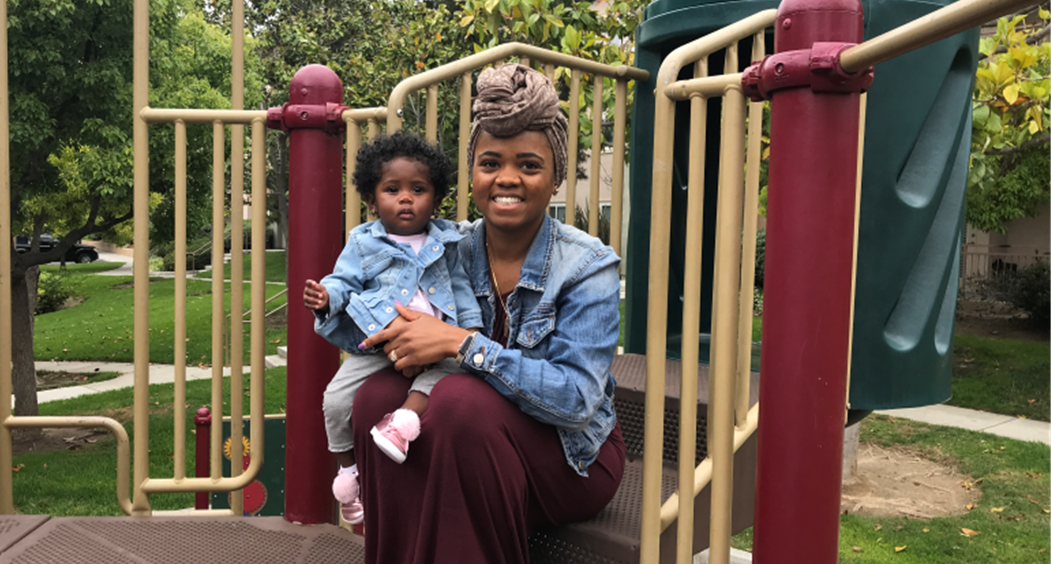Services Received and Services Provided During Prenatal Group

Public health recognizes that racism1, as well as social and economic stressors, play a major role in poor birth outcomes—babies born too early and too small—for Black people. The California Black Infant Health (BIH) Program is an evidence-informed group model with complementary one-on-one life planning designed to improve birth outcomes in the Black community by enhancing life skills, improving strategies to reduce stress and building social support. An evaluation of prenatal program implementation and outcomes was conducted for participants enrolled between July 1, 2015 and June 30, 2018 across 17 sites in 15 local health jurisdictions throughout California. For additional details about the program, the evaluation and other results please visit
Black Infant Health Program.
Four BIH staff positions – Family Health Advocates, Group Facilitators, Public Health Nurses and Mental Health Professionals* – work together to provide BIH prenatal services which include 10 weekly group sessions, complementary individual life planning, referrals to needed services, and support with completing a birth plan and a home safety checklist. This brief examines how many of the services were received by the participants, and how the services were provided by BIH staff.
*The Mental Health Professional focuses on referrals and assessment and does not provide direct clinical services.
Services Received by Participants
BIH staff offered services to 5,797 individuals during the evaluation period and 3,737 of them (64.5%) enrolled in the program. Among enrollees, 3,332 participants attended at least one prenatal group session and/or life planning meetings. On average, these participants were 27 years old and 18.5 weeks pregnant at enrollment, and their prenatal participation lasted about six months (190.6 days). The remaining enrollees did not attend group sessions or life planning meetings and were lost to follow up.
Group attendance
The average BIH prenatal group attendance (Figure 1) (5.9 sessions) was similar to the average attendance of other prenatal group services (5.3 sessions out of 10 for Centering Pregnancy, a prenatal health care group model2), although below the program recommended minimum of seven group sessions. Participants shared they faced structural barriers to group attendance, such as lack of transportation, scheduling conflicts, or medical needs.3 Attendance was also lower among those that began the program later in their pregnancy (BIH welcomes individuals to enroll at up to 30 weeks of pregnancy).
Life planning and additional services
The BIH program includes life planning meetings and other services intended to complement group sessions. Although the average number of life planning meetings attended was below the minimum goal of four (Figure 2), most individuals set at least one short term goal (see highlight on goal setting). Almost all participants received a baseline assessment, and many received at least one referral to external services, and completed a birth plan and home safety checklist prior to delivery (Figure 3).
| Started group sessions |
89.4% |
| Stayed engaged through sessions 7 to 10 |
71.0% |
| Completed the recommended 7 or more group sessions |
42.6% |
| Average number of group sessions attended out of 10 |
5.9 |
| Started life planning |
94.3% |
| Attended the recommended 4 meetings |
35.3% |
| Set at least one short term goal |
78.4% |
| Average number of meetings |
3.3 |
Data Source: Data includes participants that were recruited and enrolled over 3 state fiscal years (July 1, 2015 – June 30, 2018) and attended a prenatal group or life planning meeting (n=3,332). Extracted from BIH State data system on 12/31/18.
Goal Setting in BIH
 Setting goals is a life skill that can help build empowerment.4 Among the 2,612 participants who set at least one short-term goal, the median number of goals set was three.
Setting goals is a life skill that can help build empowerment.4 Among the 2,612 participants who set at least one short-term goal, the median number of goals set was three.
Participants set goals related to:
- Health (73.1%), such as smoking cessation or setting an exercise schedule.
- Finance (70.6%), such as saving money or looking for employment.
- Relationships (46.1%), such as setting time to talk to a partner and sharing the BIH experience with family and friends.
BIH participants shared:

“After attending Black Infant Health, goal setting has become a regular practice. I even have friends that have learned to do it from watching me. Also, recognizing the importance of using my supports to take time to take care of me.”
“BIH helped me by giving me the knowledge to set goals that I can reach and accomplish in a timely manner. BIH also helped me establish a sisterhood of lasting friendships of other women who share some of the same interests in life as me, we hold each other accountable and get through life's challenges together. ”
| Received a baseline assessment of strengths and needs |
99.5% |
| Received at least one referral to services like nutrition, financial assistance, or behavioral health |
66.0% |
| Completed a birth plan prior to delivery |
45.0% |
| Completed a home safety checklist prior to delivery |
43.3% |
Data Source: Data includes participants that were recruited and enrolled over 3 state fiscal years (July 1, 2015 – June 30, 2018) and attended a prenatal group or life planning meeting (n=3,332). Extracted from BIH State data system on 12/31/18.
| Sessions were facilitated by 2 trained staff |
96.8% |
| No skipped curriculum activitiesa |
86.1% |
| No modified curriculum activitiesb |
73.0% |
| Sessions that recorded participants' feedbackc |
53.9% |
Data Source: Group session (n=3,347) data for 3 state fiscal years (July 1, 2015 – June 30, 2018). Extracted from BIH State data system on 12/31/18. a) Percent for 2,285 sessions with data. b) Percent for 2,311 sessions with data. c) Participant’s feedback indicated that the conversation, learning, and the food were all well liked aspects of the sessions.
Services Provided by the Program
BIH services included multiple prenatal group session series for Black birthing people, with the goal of offering 10 sessions per series. Of the 386 series made available, 82.1% offered all 10 sessions, totaling 3,347 group sessions from 2015-2018. Group sessions were mostly implemented as intended in relation to facilitation consistency (i.e., having the same two facilitators throughout series) and the content was delivered with high adherence to the curriculum (Figure 4). Most sessions also provided the required food for participants (84.5%), while sites offered other optional motivators (such as child supervision, transportation and gift cards) in more than 50% of the sessions (Figure 5). Overall, 54.9% of group sessions were held with five or more participants and the average group size per session was 4.8 participants (Figure 6). This result is comparable to other prenatal group services like Centering Pregnancy, for which group sizes of 4.65 and 5.56 participants per session on average (out of 12 recommended) have been reported.

| Sessions with food |
84.5% |
| Sessions with transportation |
72.2% |
| Sessions with child watch |
55.4% |
| Sessions with other motivators (like gift cards) |
54.1% |
| Sessions held with 1-4 participants |
45.1% |
| Sessions held with the recommended minimum of 5 participants |
40.2% |
Sessions held with the ideal 8-12 participants
|
14.7% |
| Average group size for each session |
4.8
|
Data Source: Group session (n=3,347) data for 3 state fiscal years (July 1, 2015 – June 30, 2018). Extracted from BIH State data system on 12/31/18.
Summary
- BIH participants attended an average of 5.9 out of 10 prenatal group sessions (seven being the recommended number of sessions) and 3.3 life planning meetings (four being the recommended number of meetings) throughout six months of program engagement.
- The program delivered services mostly as intended, with most group sessions delivered by two trained facilitators, more than 70% of sessions delivered without skipped or modified activities, and more than 80% providing the required food during sessions.
- The average size of groups (4.8) was below the recommended (5) and ideal sizes (8-12).
References
-
Office of Minority Health and Health Equity (OMHHE). Centers for Disease Control and Prevention. April 12, 2021. Accessed May 12, 2021. https://www.cdc.gov/healthequity/racism-disparities/index.html
- Ickovics JR, Earnshaw V, Lewis JB, et al. Cluster Randomized Controlled Trial of Group Prenatal Care: Perinatal Outcomes Among Adolescents in New York City Health Centers. Am J Public Health. 2016; 106(2):359-365.
- Francis E, Johnstone M B, Convington-Kolb S, et al. Group Prenatal Care Attendance and Women's Characteristics Associated with Low Attendance: Results from Centering and Racial Disparities (CRADLE Study). Matern. Child Health J. 2019: 23(10): 13-71-1381.
- Staples, Lee H. Powerful Ideas About Empowerment. Adm Soc Work. 1990; 14(2): 29-42.
- Klima C, Norr K, Vonderheid S, Handler A. Introduction of Centering Pregnancy in a Public Health Clinic. J Midwifery Womens Health. 2009; 54(1):27-34.
- Novick G, Sadler LS, Knafl KA, Groce NE, Kennedy HP. In a hard spot: providing group prenatal care in two urban clinics. Midwifery. 2013; 29(6):690-697.